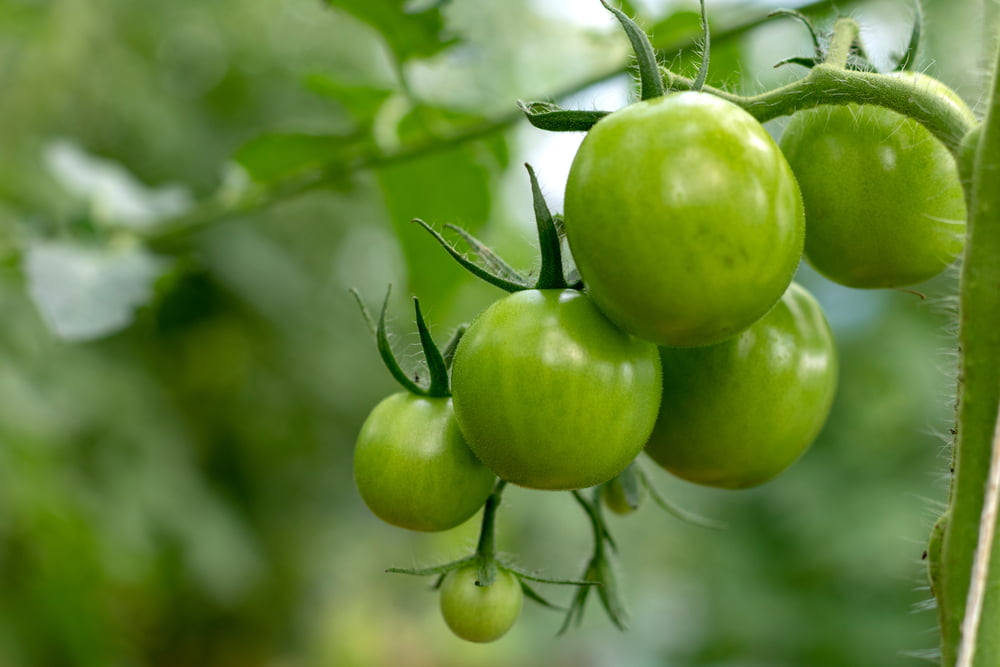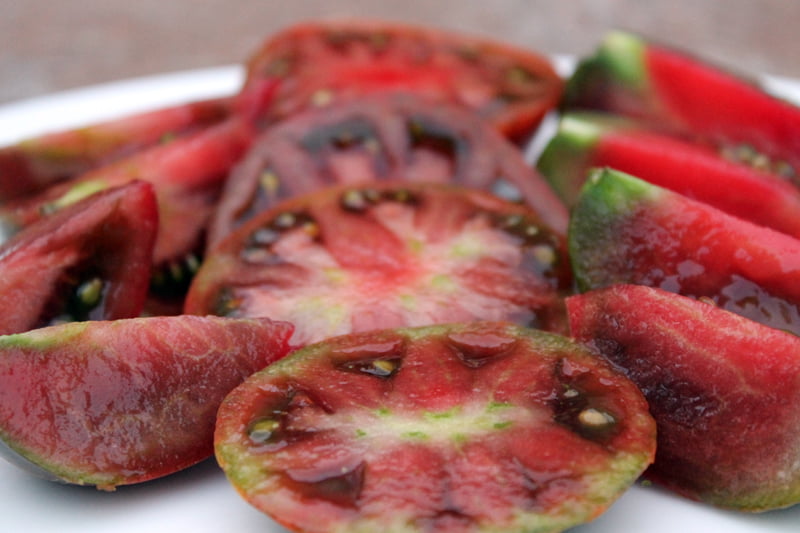In this Article
A rare few things can compare with the sweet, tangy taste of home-grown tomatoes. That is why harvesting season is such an exciting time for many gardeners. Although even inexperienced growers know that tomatoes should be picked when their fruits become plump and red, several aspects of harvesting determine how and when exactly it should be done.
Yes, the fruits should be mature before you start picking them. However, tomatoes go through several ripening stages before they reach full maturity. In some cases, it is even better to pick them before they reach full maturity. This article will help you find out how and when to harvest the tomatoes and resolve potential dilemmas you may have regarding it.
When is the Best Time to Start Harvesting the Tomatoes?
The harvesting time for tomatoes largely depends on the variety you are growing. Different sorts may take more or less time to ripen. Small ones, such as cherry tomatoes usually mature faster than those with larger fruits. To know which variety to choose, check the information on “days of maturity” for each variety before purchasing seeds or young plants.
Another factor that determines the beginning of the harvesting is when you planted the crop or sowed the seeds. To start the season earlier, you can do that indoors before the last frost. The germination of cherry tomato seeds takes from 5 to 10 days. For other varieties, it can take from 7 to 14 days. Whichever you choose, don’t forget to transplant it outside once the plant is established. The fast-growing tomatoes will produce fruits around 8 weeks after transplanting, while late-maturing varieties can take up to 12 weeks. Also, tomatoes need a lot of sun to mature, and they will ripen faster in warmer climates.
Sometimes, even the tomato smell will hint you that it’s time to pick it. Ripe tomatoes release a lovely, fresh fragrance, while those unripe have almost no scent at all.
Typically, tomato harvesting season in the UK starts in July and lasts through September. While it’s preferable to pick the fruits when they become red and slightly soften, you can also pluck them while they are still green or in some of the transitional stages.

What are the Ripening Stages of Tomatoes?
Usually, tomato fruits will go through several stages before they reach full maturity. While some varieties may skip a phase or two, most of them will get through the following:
Mature Green Stage
This is the first tomato ripening stage. The fruit is green and has almost reached its full size. Sometimes, it is only green on the outside, while its insides have already started to develop a distinct reddish tone. You can harvest the fruits in this stage to use them in soup, stew, salsa, chutney, pasta sauce, and other delicious dishes.
Breaker Stage
In the breaker stage, the bottom of the fruit, where the blossom used to be, will become red. The rest of the fruit might be either green or yellow. This is a stage in which many gardeners consider the fruit to be “vine ripe”, and they may harvest it to avoid diseases and cracking.
Turning Stage
During the turning stage, parts of the fruit start to change colour from green or yellow to soft pink or pinkish-red. Harvesting in this stage will result in faster ripening, and you can use it like you would in a mature green phase.
Pink Stage
Pink is an advanced stage in which the majority of the fruit surface is covered in pink or light red tones. The fruit becomes a bit softer and ripes faster. In this stage, it becomes attractive for birds and other small animals likely to wander off into your garden.
Light Red Stage
Light red is one of the final stages in which tomato fruit is almost completely covered in a bright red or pinkish tone. It is becoming plump and soft and only days apart from fully ripe.

Red Ripe Stage
Red ripe is the final stage of the tomato maturity process. The fruit becomes recognizably red, and many tomato growers consider that only in this phase fruit can develop a full flavour. Fruits in this stage are good to consume right off the vine.
Also, red ripe tomatoes need to be harvested as soon as possible. Otherwise, they rot and attract diseases, which can endanger the entire crop.
How to Harvest the Tomatoes?
Tomato harvesting is as simple as it gets. Before picking, check all fruits and start with fully red ones. In case you notice cracked or rotten fruits, remove and dispose of them to avoid possible infections.
To ensure that the fruit is completely ripe or not, check by giving it a little squeeze. If it feels firm under your fingers, leave it on a stem for another day or two.
Harvest tomatoes by plucking the fruit. Stems holding fruits are usually easy to break by hand, but you can also use gardening scissors. Place them carefully into a basket, making sure they don’t get bruised. The texture of the fruit will slightly change at the bruised place, so it’s best to consume it right away.
What to Do With Unripe Tomatoes?
As mentioned earlier, you can harvest tomatoes in any ripening stage — from mature green to red ripe. The best option for unripe fruits is to leave them on the stem at least until the light red stage. However, you can harvest them early to avoid pests, diseases, and deformities.
While you can use green tomatoes to prepare different meals, there are also ways to help them mature away from the stem. Most ripened tomatoes give out ethylene gas, which encourages the rest of the fruits to ripen. So, if you have some green tomatoes to ripen, place them next to mature ones and leave them like that for a few days. You can also store them with apples.
Also, if you wish to speed up the maturing process of tomatoes in general, you can plant them near apple trees.

